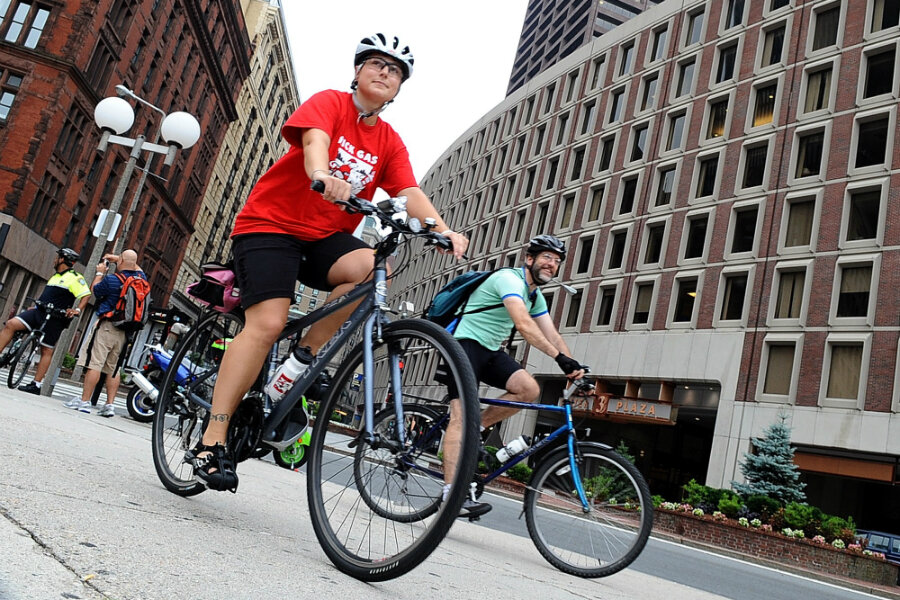Big cities healthier? How some cities make life better, study says
Loading...
Big cities are usually associated with cramped spaces, polluted air, and clogged up roads. But on the other hand, joggers, cyclists, and urban parks are also a ubiquitous element in cities.
Those contradictory factors are the reason why residents in big cities are healthier when comparing 48 medium to large cities against each other, a new survey released by Gallup and Healthways on Tuesday says, part of its State of American Well-Being series. The presence of infrastructure in these cities promote active living, thus improving residents’ overall well-being and happiness.
“Policies that nudge people into healthy activities – where it is easy to walk to the store, bike to a friend's house, get access to fresh produce and be surrounded by healthy-minded, supportive friends – are ones that make the healthy choice the easy choice,” Dan Buettner, founder of the Healhways Blue Zones Project, said in the report. “Sustained transformation depends on building an environment and establishing social policies that support and reinforce these programs."
This occurs at a time when city living is becoming as popular as ever, especially among Millennials and young families who are drawn to the amenities and convenience of living downtown. The wealth of job opportunities in cities is also an attractive factor. In 2014, the United Nations declared for the first time that more than half of the people in the planet are now urban dwellers – and by 2050, two-thirds of people will be living within city limits.
The key to improving the quality of life for residents in big cities is the presence of infrastructure that promotes activity. Out of the 48 communities that the study analyzed, five of the highest-ranked communities with most infrastructure to promote active living also scored well on health and happiness indicators. The criteria for active living are all things that prompt Americans get off the couch and out from behind the steering wheel: walkability, bike-ability, transit infrastructure, and park infrastructure.
Boston, San Francisco, Chicago, New York and Washington, D.C., take the top spots for promoting active living. Tulsa, Okla., Durham, N.C., and Indianapolis, Ind., ranked lowest.
With more opportunities to exercise, walk and stay outdoors, the report finds, residents also tend to smoke less and find the housing “ideal” for individuals and families alike. It’s a trend that can be observed in a number of cities, such as Seattle and Minneapolis, where young families are choosing to forego suburbs for downtown housing despite having less space.
The study authors encouraged city planners and developers to invest in infrastructure that can improve wellbeing. They gave examples of "turn around" communities that made that choice. For example, Albert Lea, Minn., built more than 10 miles of bike lanes and sidewalks, and adopted policies to reduce tobacco use in addition to launching workplace programs to promote health and social interaction. The results: an improved score in its well-being ranking in a faster rate than others across the state and the nation.
“Sustainable, lasting well-being becomes achievable when residents, city leaders, businesses, schools, and other partners work together to the benefit of public health,” Katrina Worlund, senior vice president of the Blue Zones Project at Healthways said in a press release. “In addition to healthier populations, communities benefit by lower health-care costs, less chronic disease, and improved productivity.”
Editor's note: This article has been updated to reflect the nature of the study that compared 48 medium and large cities to each other.








